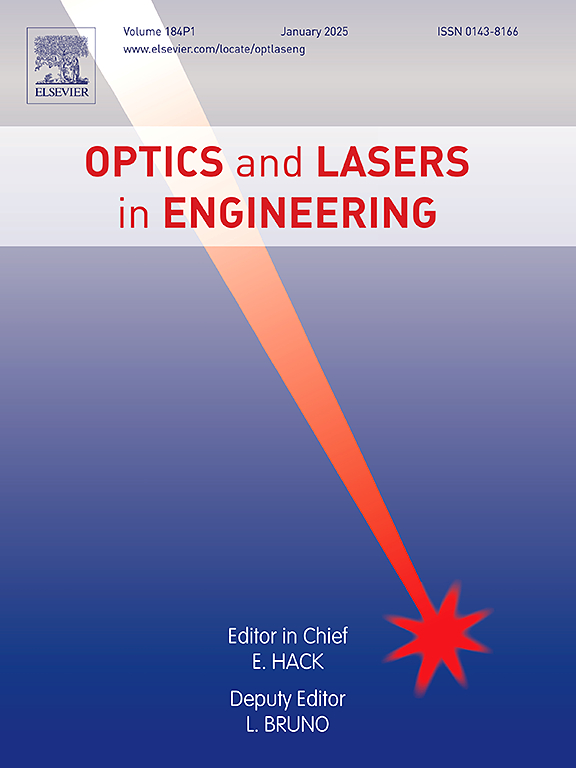太赫兹波产生的共振模式诱发振荡效应及主要论证
IF 3.5
2区 工程技术
Q2 OPTICS
引用次数: 0
摘要
我们提出了一种在全太赫兹波段产生太赫兹(THz)波的方法,该方法利用了高质量因子光子晶体谐振器内的共振模式。在该方法中,输入的红外“单频”波与谐振腔内有效诱导的共振模式产生太赫兹频率的拍音,并借助幅度解调器将拍音转换为独立的太赫兹辐射波,从而提供了较高的功率转换效率(PCE)。理论PCE是不考虑插入损耗的22.93%半波整流幅度解调器。仿真结果表明,通过半波整流解调,从传统的“单频”波诱导共振模式,利用诱导共振模式与PCE值为24.03%、与理论PCE值一致的输入源波进行拍频的方法是可行的。只有在一定的频率下才能获得如此高的PCE。在微波波段的实验中进一步证明了该方法的机理。所提出的方法是一种通用的方法,可以应用于各种波的频率转换,在电子,光学,声学等各种应用中展示了其潜力。由于太赫兹技术的高效率和小型化,我们期望它能克服许多未来的挑战。此外,我们的发现为有效的频率操纵铺平了道路,在信号处理、检测和通信系统中具有广泛的意义。本文章由计算机程序翻译,如有差异,请以英文原文为准。
Resonance-mode-induced beating effect for THz wave generation and principal demonstration
We present a method of terahertz (THz) wave generation in the complete THz band that harnesses resonance modes within high-quality-factor photonic-crystal resonators. In the proposed method, the input infrared “single-frequency” wave and the resonance mode induced efficiently in the resonator generate a beat note of THz frequency, and the beat note is converted to an independent THz radiation wave with the help of an amplitude demodulator, which provides high power-conversion efficiency (PCE). The theoretical PCE is a 22.93 % half-wave-rectification amplitude demodulator without considering the insertion loss. Through simulations, we demonstrate the feasibility of our approach of inducing a resonance mode from a conventional “single-frequency” wave and using the induced resonance mode to beat with the input source wave with PCE of 24.03 % in agreement with the theoretical PCE value by half-wave-rectification demodulation. Such a high PCE can be obtained only at a certain frequency. The mechanism of the proposed method is further demonstrated experimentally in the microwave band. The proposed method is a general method that can be applied to frequency conversion of all kinds of waves, showcasing its potential across various applications in electronics, optics, acoustics, and beyond. We expect to overcome many future challenges in terahertz technology because of its high efficiency and miniaturization. Furthermore, our findings pave the way for efficient frequency manipulation with broad implications in signal processing, detection, and communication systems.
求助全文
通过发布文献求助,成功后即可免费获取论文全文。
去求助
来源期刊

Optics and Lasers in Engineering
工程技术-光学
CiteScore
8.90
自引率
8.70%
发文量
384
审稿时长
42 days
期刊介绍:
Optics and Lasers in Engineering aims at providing an international forum for the interchange of information on the development of optical techniques and laser technology in engineering. Emphasis is placed on contributions targeted at the practical use of methods and devices, the development and enhancement of solutions and new theoretical concepts for experimental methods.
Optics and Lasers in Engineering reflects the main areas in which optical methods are being used and developed for an engineering environment. Manuscripts should offer clear evidence of novelty and significance. Papers focusing on parameter optimization or computational issues are not suitable. Similarly, papers focussed on an application rather than the optical method fall outside the journal''s scope. The scope of the journal is defined to include the following:
-Optical Metrology-
Optical Methods for 3D visualization and virtual engineering-
Optical Techniques for Microsystems-
Imaging, Microscopy and Adaptive Optics-
Computational Imaging-
Laser methods in manufacturing-
Integrated optical and photonic sensors-
Optics and Photonics in Life Science-
Hyperspectral and spectroscopic methods-
Infrared and Terahertz techniques
 求助内容:
求助内容: 应助结果提醒方式:
应助结果提醒方式:


